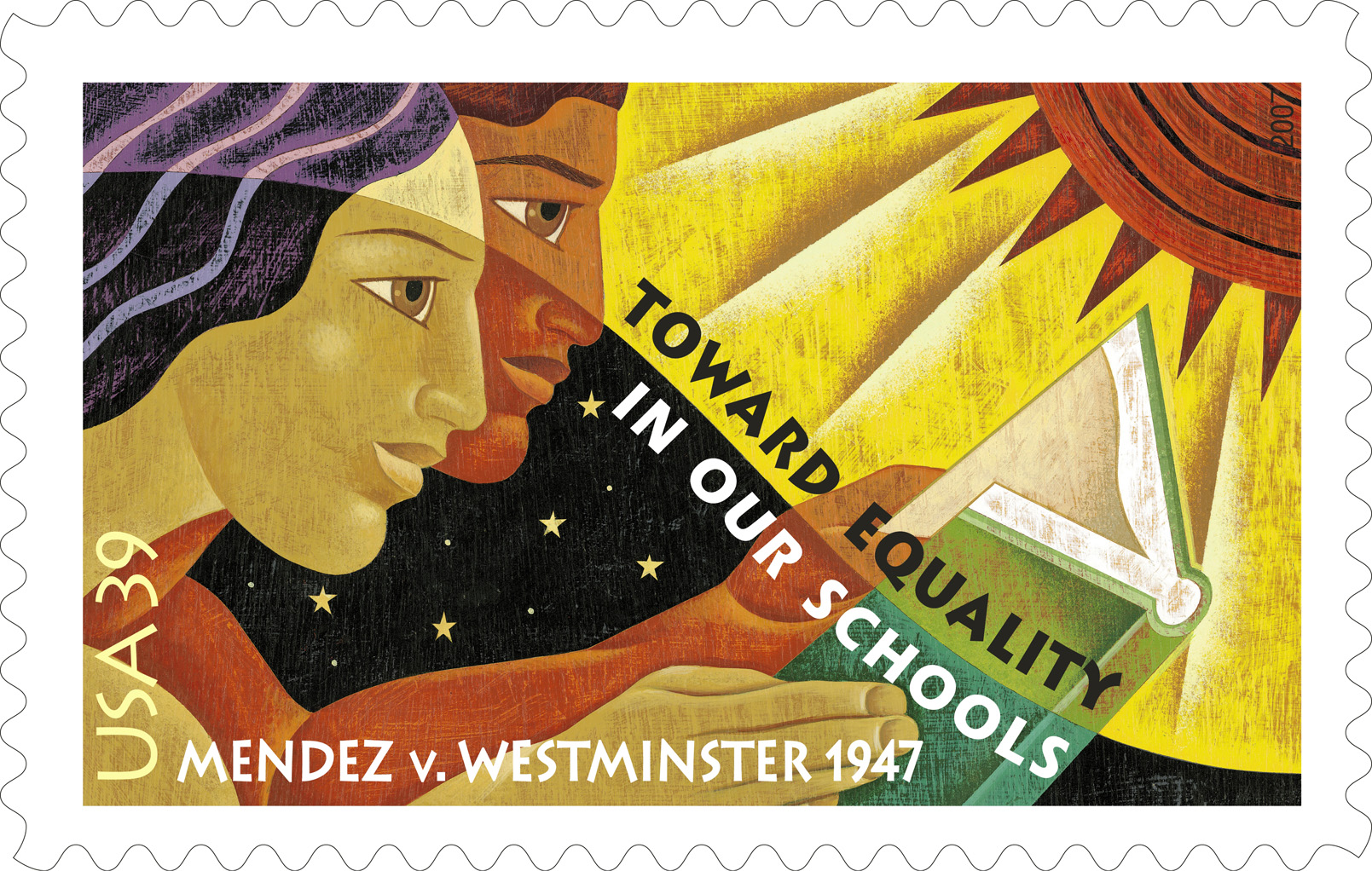
Mendez vs. Westminster
Before Brown vs. The Board of Education determined that “separate but equal” schools were unconstitutional there was Sylvia Mendez. When Sylvia and her two brothers, a Puerto Rican and Mexican American family from Westminster, California, tried to enroll at the “white” school near their home they were denied because they were Latino. Redirected to the “Mexican school” further away from their home and in poor condition. In 1945, the Mendez parents, along with several other Latino families, sued the school district and won. This landmark case set the precedent for desegregation of schools throughout the US.
Hernandez vs. Texas
The idea of a “jury of your peers” is a concept not fully realized until 1954. The trial of Pete Hernandez in Jackson County, Texas. Four years earlier the farm worker was found guilty of murder. The only problem – not a single juror was a Mexican American peer. In fact Mexican Americans were excluded from serving on juries in the county for over 25 years. The Supreme Court of the United States determined that Hernandez’s 14th Amendment rights (equal protection under the law) were violated. He was subsequently granted a second trial. The ruling determined that all minority groups were entitled to such protection and fair treatment.
The United Farm Workers Association
Living and working as a migrant farmworker most of his life set the stage for activist Cesar Chavez to push for the better treatment and an improved lifestyle for farmworkers. Frustrated by a lack of attention these issues were receiving by the Community Service Organization he started The United Farm Workers Association (UFWA). Along with fellow Mexican American Dolores Huerta in 1962, UFWA became the largest and most influential union in the country. Their success began with the Grape Boycott in Delano. The boycott lasted for three years. Resulting in the first collective bargaining agreement in the United States between workers and growers in the country. It helped secure basic rights such as rest periods, protection from pesticides, and clean drinking water among many others.
The Los Angeles High School Walkouts
Facing overcrowded classrooms, unfair treatment from racist teachers, and discipline for things like speaking Spanish in the hallways, students at four different Los Angeles high schools staged a series of walkouts in 1968 over a two week period. During that time over 10,000 mostly Mexican American students protested and demanded better conditions in their classrooms and support from the school district. The demands for smaller classes and better treatment were eventually met and inspired a generation of Californians of the power that students have in their own hands.
The Young Lords Party Forms
It started as a Puerto Rican street gang. It grew into a movement to improve housing, health and education for boricuas and low income communities in the Midwest and Northeast of the United States. Started by Jose “Cha Cha” Jimenez in 1969 the Young Lords Party (YLP) organized Chicago’s Puerto Rican community. Who were then facing subpar housing, high unemployment and failing schools. The Young Lords helped themselves locally, but also fought for Puerto Rican independence. The group spread from Chicago to New York City to the island itself. The group took a page from the Black Panther Party and organized free breakfast programs, health clinics and cleanups. They brought attention to the living condition with regular protests and take overs of abandoned and vacant buildings then used to provide services the local government did not.
